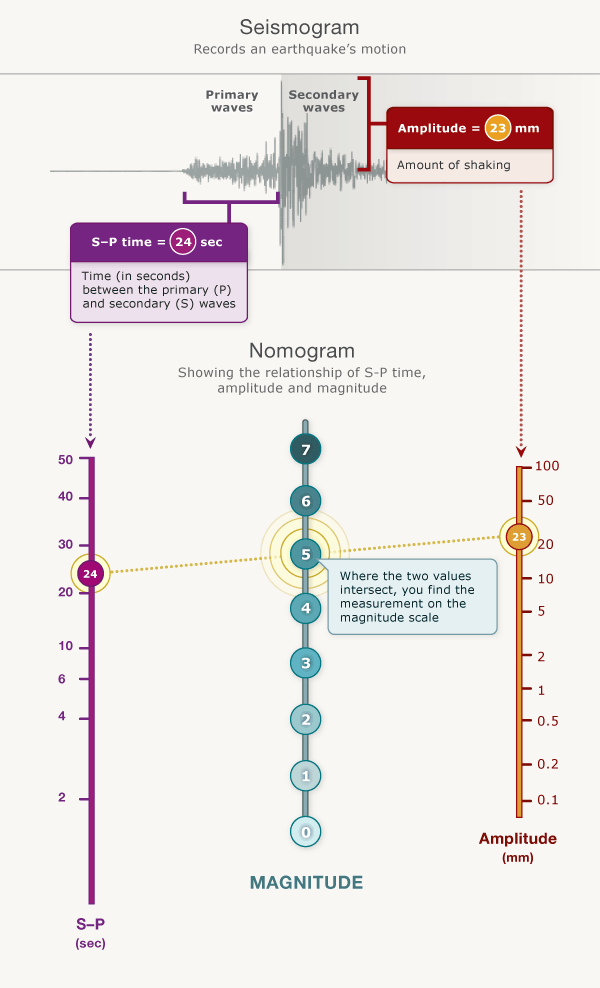
The magnitude scale measures the size of an earthquake at its source. This measurement is taken from a seismogram, using two variables. One is the time between the arrival of the primary (P) and secondary (S) waves the S-P time (secondary minus primary). It indicates the distance from the origin or focus of the earthquake, under the ground. The other variable is the height of the biggest wave (amplitude). A line can then be drawn between these measurements on a chart known as a nomogram. This has an S-P scale on one side and an amplitude scale on the other, and the intersection of a line joining the two values with the magnitude scale indicates the size of the earthquake. In the example shown here, the S-P time is 24 seconds, and the amplitude is 23 millimetres, giving a magnitude of 5. A magnitude 9 quake is extremely rare.
Using this item
Te Ara - The Encyclopedia of New Zealand

This item is licensed under a Creative Commons Attribution-NonCommercial 3.0 New Zealand Licence











Add new comment